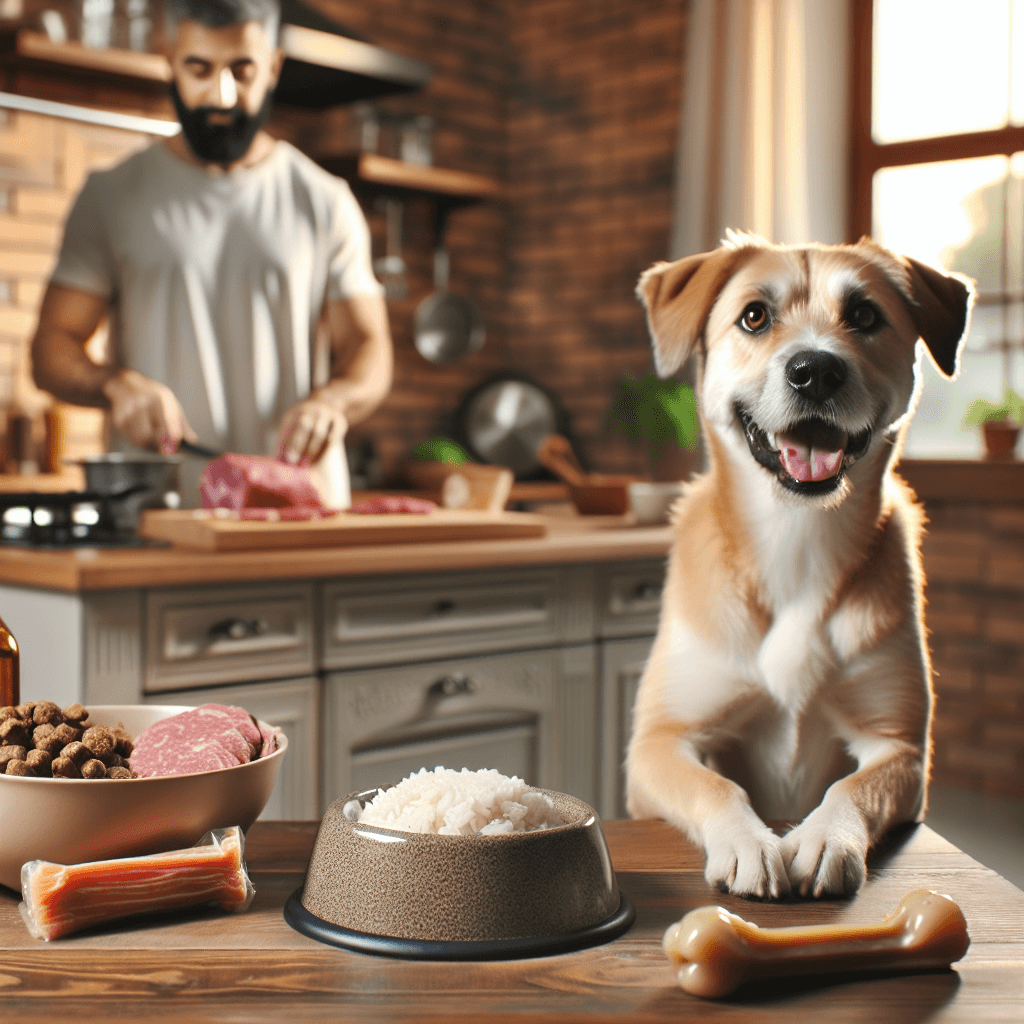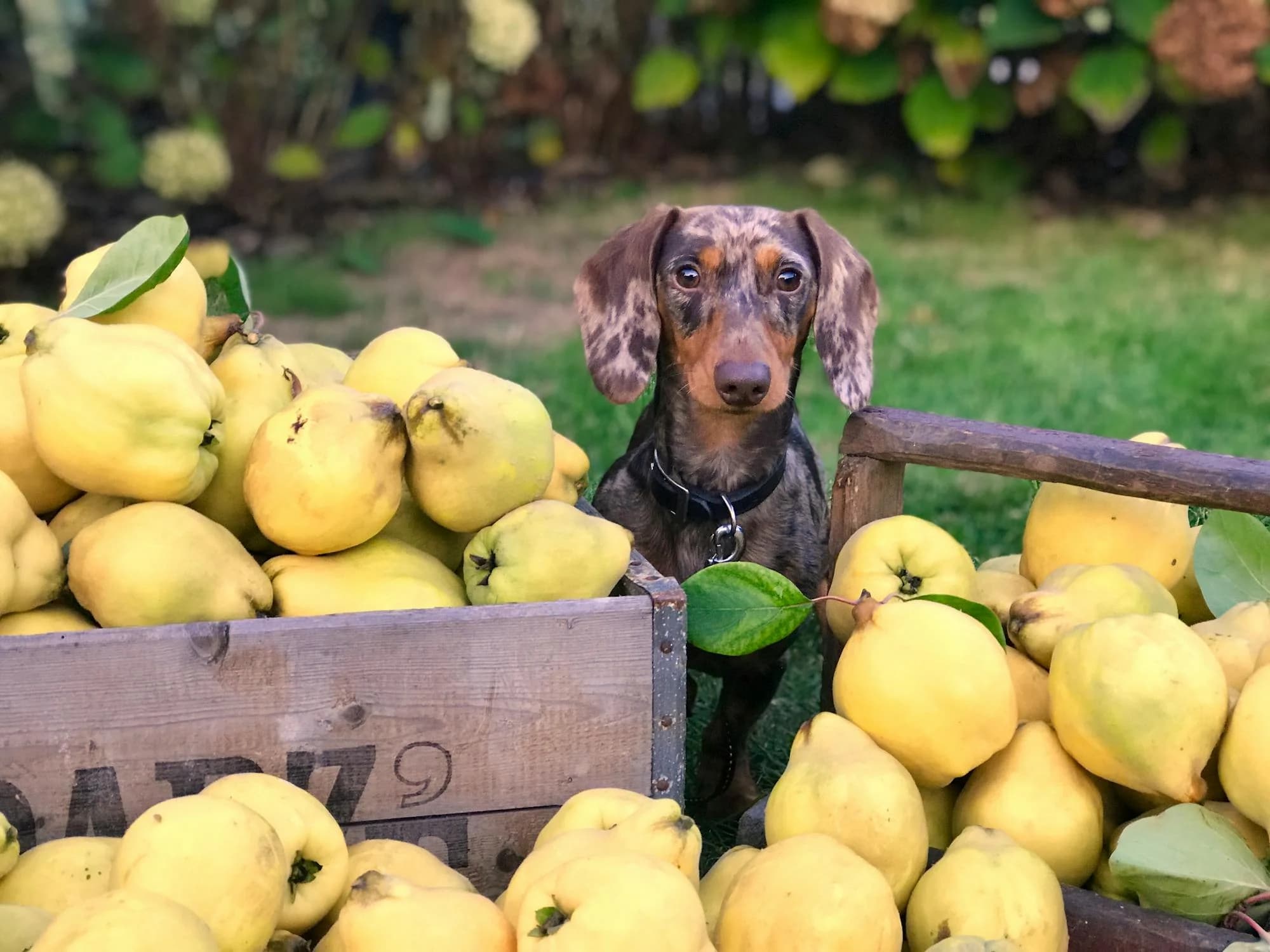The Ultimate Guide to Feeding Your Dog: Nourishing Body and Mind 🐾

1. Introduction
Welcome, fellow dog lovers! Today we're diving into one of the most crucial aspects of dog care: nutrition. As a dog psychologist, we've spent years observing and understanding the intricate relationship between what our furry friends eat and how it affects their overall well-being. In this comprehensive guide, we'll explore not just what to feed your dog, but how to turn mealtime into a bonding experience that nourishes both body and mind.
At my magical place, the Dog Psychology Center, we practice a natural, simple, and profound way of connecting with our canine companions. Our approach to feeding is no different. We'll break down our feeding philosophy into two main categories: what keeps the body healthy (food) and what keeps the mind engaged (treats). So, let's embark on this culinary journey with our four-legged friends!
2. The Importance of Feeding Rituals �
2.1. Rice and Ground Meat: A Favorite Add
One of the most beloved meals at our center is a simple combination of rice and ground meat. This isn't just about the nutritional value; it's about the entire experience surrounding the meal. Let me paint you a picture:
Imagine the excitement in the air as your dog's nose twitches, catching the first whiffs of meat sizzling in the pan. The sound of rice bubbling gently in the pot. Your pup's eyes following your every move as you prepare their meal with love and care. This isn't just feeding; it's a ritual, a bonding experience that goes beyond mere sustenance.
Why is this so effective? It's all about engagement. When your dog sees you personally preparing their food, it creates a deeper connection. It's reminiscent of those cherished childhood memories of watching a parent cook, the anticipation building as delicious aromas fill the air. For our dogs, this experience is magnified tenfold thanks to their incredible sense of smell.
2.2. The Psychology Behind Feeding Ritu
But here's where the psychology comes in: while the preparation builds excitement, the actual feeding should promote calmness. At the Dog Psychology Center, we always ensure our dogs are in a calm, quiet state before receiving their food. Why? Because we want to nurture patience, silence, and a serene mind.
This approach serves multiple purposes:
1. It reinforces good behavior and self-control
2. It creates a positive association between calmness and rewards
3. It helps prevent food aggression or overexcitement around meals
Remember, the goal is to feed a calm mind, not an excited one. This practice helps your dog associate food with a state of peaceful contentment rather than frenzied anticipation.
3. Dry Food: A Simple and Effective Option
While homemade additions can be wonderful, the foundation of many dogs' diets is often high-quality dry food. At our center, we've found great success with a particular brand that I've been using for over 20 years. This food played a crucial role in helping my own dog, Daddy, during his battle with cancer.
3.1. The Benefits of Limited Ingredie
When it comes to dry food, I'm a firm believer in the power of simplicity. The best dog foods don't necessarily have a laundry list of ingredients. Instead, look for foods with:
- Natural ingredients
- Limited, easily recognizable components
- No artificial preservatives or fillers
Remember, dogs are descendants of wolves. Their digestive systems are designed to process simple, meat-based diets. Overly complex foods with numerous ingredients can sometimes lead to digestive issues or allergies.
3.2. How Dry Food Supports Dog Hea
A high-quality dry food can provide numerous benefits for your dog:
1. Balanced Nutrition: Good dry foods are formulated to meet all your dog's nutritional needs.
2. Dental Health: The crunchy texture can help clean teeth and reduce plaque buildup.
3. Convenience: It's easy to store and serve, making it practical for daily feeding.
4. Digestive Health: The right dry food can promote good digestion and regular bowel movements.
5. Skin and Coat Health: Essential fatty acids in quality dry foods contribute to a shiny coat and healthy skin.
At our center, we've observed improvements in our dogs' overall health, digestion, skin condition, and coat quality since switching to our preferred dry food. It's a testament to the fact that sometimes, the simplest solutions are the most effective.
4. Treats: Nourishing the Mind
Now, let's shift gears and talk about everyone's favorite topic: treats! While regular meals are about nourishing the body, treats are all about engaging the mind. They're not just rewards; they're tools for training, bonding, and mental stimulation.
4.1. Liver Treats: A Smelly Favor
When it comes to treats, the smellier, the better! Liver treats are a particular favorite at our center. Here's why:
1. Irresistible Scent: The strong odor is incredibly enticing to dogs, making these treats highly motivating.
2. Small but Mighty: You only need tiny pieces, making them perfect for training sessions.
3. Nutrient-Dense: Liver is packed with vitamins and minerals.
However, moderation is key. Due to their rich nature, liver treats should be given sparingly, especially to dogs with sensitive stomachs.
4.2. Fish-Based Treats: Engaging the N
Another category of treats that dogs go crazy for are fish-based snacks. These could be small dried fish or treats made from fish skin. The benefits include:
1. Strong Aroma: Like liver treats, the fishy smell is irresistible to most dogs.
2. Omega-3 Fatty Acids: Fish treats can provide beneficial fatty acids for skin and coat health.
3. Novel Protein: For dogs with allergies to common proteins like chicken or beef, fish can be a great alternative.
A word of caution: these treats can have a strong odor, so it's best to use them outdoors or in well-ventilated areas!
4.3. Marrow Bones: The Ultimate Primal Tr
For a truly primal experience, nothing beats a good marrow bone. These are not just treats; they're an experience. Here's why we love them:
1. Long-Lasting Entertainment: Dogs can spend 15-20 minutes or more working on a single bone.
2. Dental Health: Chewing on bones can help clean teeth and massage gums.
3. Mental Stimulation: Working to get at the marrow provides excellent mental exercise.
4. Nutritional Benefits: Marrow is rich in nutrients and healthy fats.
However, supervision is crucial when giving marrow bones. Always monitor your dog to prevent choking or broken teeth, and remove the bone once most of the marrow has been consumed.
4.4. Bully Sticks: A Long-Lasting Opt
Bully sticks are another fantastic treat option. While they can be on the pricier side, they offer several benefits:
1. Durable: They last longer than many other chew treats.
2. Digestible: Unlike rawhide, bully sticks are fully digestible.
3. Dental Health: The chewing action helps clean teeth.
4. Low Fat: They're a leaner option compared to some other chews.
Some bully sticks can have a strong odor, so look for odor-free options if that's a concern. As with all treats, moderation is key.
5. The Importance of Timing and Energy Management
When it comes to treats, timing is everything. Here are some key principles we follow at the Dog Psychology Center:
1. Treat Time is Limited: Keep treat sessions to 10-15 minutes max. Treats should be a special occurrence, not a constant indulgence.
2. Post-Exercise Treats: Offer treats after walks or play sessions. This reinforces the idea that good things come after expending energy.
3. Evening Wind-Down: A chew treat like a bully stick can be perfect for helping an energetic dog settle down in the evening.
4. Training Sessions: Use small, smelly treats for short training sessions to keep your dog engaged and motivated.
Remember, treats are not a substitute for meals. They should complement a balanced diet, not replace it.
6. Feeding Multiple Dogs: Tips and Precautions 🐕
If you have more than one dog, mealtime can become a bit more complex. Here are some strategies we use at the center:
1. Separate Feeding Areas: If possible, feed dogs in different areas to prevent competition.
2. Supervision: Always supervise mealtime, especially when introducing new foods or treats.
3. Know Your Pack: Understand each dog's temperament. Some may need to be fed separately to prevent food aggression.
4. Consistency: Feed all dogs at the same time to establish a routine and prevent jealousy.
5. Equal Treatment: Ensure each dog gets their fair share of treats and attention.
When introducing high-value treats like marrow bones to a multi-dog household, extra precautions may be necessary. You might need to use leashes initially to keep dogs separated and calm while enjoying their treats.
7. The Role of Exercise in Feeding 🏃
At the Dog Psychology Center, we firmly believe in the mantra: Exercise, Discipline, Affection - in that order. This applies to feeding as well. Here's why:
1. Energy Balance: Exercise helps burn energy, making dogs calmer and more receptive to training and feeding.
2. Appetite Regulation: Regular exercise can help regulate a dog's appetite, preventing overeating.
3. Digestive Health: Activity aids digestion and can help prevent issues like constipation.
4. Mental Stimulation: Combining physical exercise with mental challenges (like scent work) before mealtime creates a more fulfilling routine for your dog.
Always wait at least an hour after vigorous exercise before feeding your dog to prevent bloat, especially in large, deep-chested breeds.
8. Conclusion
Feeding your dog is about so much more than just putting food in a bowl. It's an opportunity for bonding, training, and nurturing both the body and mind of your furry companion. By understanding the psychology behind feeding and treating, you can transform these daily activities into profound experiences that strengthen your relationship with your dog.
Remember, every dog is unique. What works for one might not work for another. Always consult with your veterinarian before making significant changes to your dog's diet, especially if they have specific health concerns.
At the Dog Psychology Center, we strive for balance in all things. A mix of nutritious meals, engaging treats, and plenty of exercise creates happy, healthy, and well-balanced dogs. By applying these principles, you can create a feeding routine that not only nourishes your dog's body but also stimulates their mind and strengthens your bond.
Here's to happy, healthy dogs and the humans who love them!
9. FAQs
1. Q: How often should I give my dog treats?
A: Treats should make up no more than 10% of your dog's daily caloric intake. The frequency depends on the size of the treat and your dog's size and activity level.
2. Q: Are raw bones safe for dogs?
A: Raw bones can be safe if given under supervision. Always choose appropriately sized bones and monitor your dog while they're chewing. Cooked bones should never be given as they can splinter.
3. Q: How can I tell if my dog food is high-quality?
A: Look for foods with named meat sources as the first ingredient, avoid artificial preservatives, and check for certification from AAFCO (Association of American Feed Control Officials).
4. Q: My dog eats too fast. What can I do?
A: Try using slow-feeder bowls, puzzle feeders, or spreading the food out on a mat to slow down eating.
5. Q: Is it okay to feed my dog a homemade diet?
A: Homemade diets can be healthy if properly balanced. Always consult with a veterinary nutritionist to ensure your homemade diet meets all of your dog's nutritional needs.



